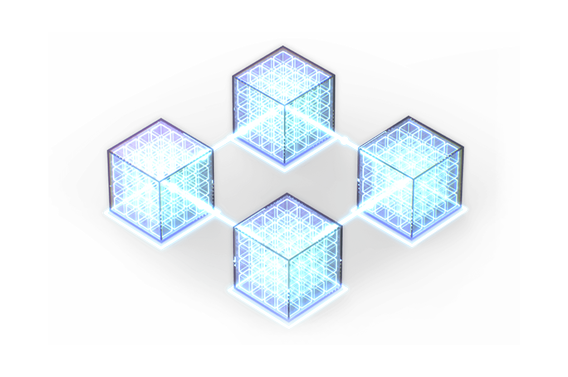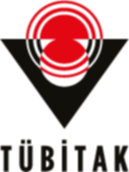BZLAB
Blockchain
What is Blockchain?
The blockchain technology that fuels digital currencies, assets and commodities can be described as a distributed database or shared ledger that is updated by consensus. But blockchain is more than just a database.
A blockchain network can be public or private. If it operates on a scheme that anyone can read, use or modify, it is an "Open Blockchain". If there is limited and controlled access to the system, it is called a "Private Blockchain".
For more information on blockchain, you can visit the official website of the BAĞ system.

BZLAB
Asset Transfer
Public and Secret Keys: Each user has a pair of keys when joining the blockchain system. The public key is publicly known and represents the person's public account on the blockchain. The secret key is carefully kept by the user and is not known to anyone. The secret key is used to sign and verify transactions.
Process Creation: When a user wants to transfer assets to another user, they create a transaction. This transaction contains the amount of the asset to be sent and the recipient's public key. For example, User 0 initiates this transaction when they want to send a valuable asset (digital currency, commodity, etc.) from their account to User 1.
1. Creating a Transaction Summary: The transaction generates a hash before being aggregated into a block. This hash combines the transactions, the previous block hash and the public key of the person to whom the transfer is to be made. The blocks are processed at regular intervals and records are stored in them. Cryptographic hash algorithms and digital signatures are used during this process.
2. Signature and Control: The signed transaction is sent to the blockchain network. The nodes in the network check the correctness and validity of the transaction. The transaction verifies whether the sending user has enough assets and has not already used the same asset in another transaction. The public and private keys of the signatory are used at this stage.
3. Confirmation and Addition to Blockchain: Once a certain number of nodes have verified the transaction, it is added to the blockchain. This ensures that the transaction is permanently recorded. The transaction is mined onto the blockchain using hash functions.
BZLAB
Blockchain Technologies
In today's internet world, data is transferred in many areas (multimedia, communication, web interface, etc.). Blockchain technology, on the other hand, is a distributed database that allows us to transfer not only this data but also the assets we attribute value to. With the Bitcoin digital currency proposed in 2008 by an anonymous author nicknamed Satoshi Nakamoto, the world began to talk about the existence of a new international currency. While Bitcoin was initially considered to be just money, it was later realized that the blockchain technology on which Bitcoin is based could have more general uses.
Blockchain technology essentially eliminates the need for a centralized server or trusted authority, allowing trust to be established in a decentralized manner. This technology, which underpins digital currencies such as Bitcoin and Ethereum, is not limited to financial applications, but can be used in a much wider range of applications.
Blockchain technology replaces centralized trust systems, one of the key challenges facing today, allowing them to operate more efficiently. In addition to transferring data on the existing internet infrastructure, this technology enables the transfer of valuable assets in a secure and transparent way. As a result, blockchain opens the door to a new technology - a decentralized, encrypted ledger - that could reshape our entire lives.
BZLAB
Blockchain Model
Blockchain technology is built on a structure in which records and blocks are integrated. Here are the key components that make up this structure:
Records: Blockchain records contain any content information built on top of the relevant blockchain structure. Depending on the design requirements, these records may include money transfers, inventory records, customer information and other values. Especially for virtual currencies, these records contain money transfer information. All transfers from one registered user to other registered users in the system are captured through these records. New transfer requests are also queued and recorded in the next transaction queue.
Blocks: Records are written into blocks, which are periodically combined and processed. Criteria such as the content of the blocks and how many records they can hold are part of the blockchain design. Typically, cryptographic hash algorithms and digital signatures are used during the creation of a block. This is important to ensure the security and integrity of the blocks and represents the sequence of operations by which a new block is linked to the previous block and the system is constantly updated.
This structure forms the basic data structure on which the blockchain is based. Sequentially combining records and securely processing them in blocks allows the blockchain to function as a secure, transparent and distributed ledger.
Central
Allocation of Responsibility
Distributed
Summary Algorithms
Summary algorithms can be defined as follows without technical explanation:
They are one-way functions that convert data of different lengths to a fixed length and always produce the same output with the same input. These functions ensure that even a single character change in a text completely changes the text summary. Summary functions are used to check data integrity and are therefore of great importance in blockchain databases.
In blockchain, when creating block hashes, the hash value of the previous block is added to the new block. This creates a structure where blocks are interconnected and each block is linked to the blocks before and after it through the hash algorithm. Through these connections, the integrity and history of any block can be verified. This is why this technology is called "blockchain", which means "chained blocks".
In blockchain technology, each participant keeps a copy of all records from the start of the system. If records are changed, the summaries change and this change can be detected by other participants. This eliminates the need for a reliable centralized database. Blockchain offers a distributed database system, which allows anyone to verify and prove trustworthiness.
Blockchain technology brought together four different disciplines of science when it emerged in 2009 with Bitcoin as its first application. Although these four disciplines had existed before, the combination of all of them in Bitcoin led to a major innovation and revolutionized Bitcoin. It also opened the doors for a wider range of applications of blockchain technology.
Economics and Monetary Theory
Bitcoin is closely related to economics and monetary theory. It has achieved economic independence by creating a decentralized digital currency outside the traditional financial system and central banks. The supply and demand of Bitcoin works based on economic theory.
Database Theory
Blockchain has redefined database theory. Traditional centralized databases have been replaced by a system where data is held and secured in a distributed manner. This has brought a completely new approach to databases.
Cryptography
Blockchain technology is based on cryptography. Cryptography is used to secure data and supports the functioning of cryptocurrencies like Bitcoin. Cryptography plays a critical role in securing user identities, transactions and blocks.
Game Theory
Bitcoin's operating principle is based on a game-theoretic foundation that involves incentivizing players (miners) and how the transaction verification process works. Miners compete to verify transactions and create new blocks, which increases the reliability of the system.
BZLAB
Broad Reach Distributed Ledger
Not Subject to Authorization Publicly Shared
Authorized Public Shared
Confidential Shared Subject to Authorization
Databases
BZLAB
Bitcoin & Ethereum's Impact on Blockchain
Bitcoin and Ethereum are two prominent representatives of blockchain technology, both of which have had a major impact in their respective fields. Bitcoin is one of the most important digital currencies (https://coinmarketcap.com/) has a dominant volume, Ethereum offers a wider range of applications and more functionality through smart contracts. Ethereum offers a platform that can implement specialized transaction rules called smart contracts. This allows automated transactions and contracts to be executed through code. Ethereum can work like a computer that anyone can access around the world. This makes distributed applications and services accessible to a wider range of users. While Bitcoin provides a platform for decentralized currency, Ethereum provides reliable applications that can run without the need for a third party (centralized servers). With Ethereum's smart contract logic, all existing internet technologies have been completely transformed and transformed.

- Do You Need Blockchain in Your Business Model?
- The Future of Blockchain Technology
Blockchain technology may not be suitable for every business model and use case. It is therefore important to consider specific requirements and use cases before adopting blockchain. Here are some considerations to help you assess whether you need blockchain technology:
- Is Distributed Trust Necessary?: Blockchain creates trust between multiple actors in a decentralized way. If your business model does not suffer from trust issues or you have other mechanisms in place to ensure trust, blockchain may not be necessary.
- Is There More Than One Party Creating and Using Data?: Blockchain builds trust between multiple parties, so there is no need for a single central authority. If your business involves a single central actor creating and using data, there is no need to use blockchain.
- Is There a Need for Data Immutability?: The blockchain makes it difficult to change data. If changing records is not of serious importance, the blockchain may not be needed.
- Does Privacy Matter?: Blockchain technology can provide different levels of privacy. However, some applications may require more privacy and blockchain may be limited in this case.
- Is There a Need for Central Authority?: Blockchain enables transactions without the need for a central authority. If there is no role of a central institution or authority in your business model, the use of blockchain can be considered.
- Is Audit Needed?: Blockchain transparently records and audits transactions. If you need auditing in your business, blockchain can be considered.
In conclusion, blockchain technology can bring many benefits under certain conditions. However, it is important to remember that it is not suitable for every business model. Depending on the needs and goals of your business model, the decision to use or not to use blockchain should be made.
Bitcoin altyapısını oluşturan blokzincir teknolojisi gelecek vadeden bir teknoloji olmakla beraber bu teknolojinin tam bir olgunluğa erişmesi için kat edilmesi gereken adımlar vardır. Ancak, İsviçre merkezli Credit Suisse tarafından hazırlanan geniş çaplı bir rapora göre, blokzincir sadece dijital para birimleri veya finansal hizmetler için değil birçok alanda kullanılmaktadır. Dünya Ekonomik Forumu tarafından yapılan bir ankete göre, yöneticilerin %58’i küresel Gayri Safi Millî Üretimin %10’unun “2025’den önce blokzincirde bulunacağı” yönünde bir tahmin yürütmektedir. Bu yıl rapora göre olgunluğa erişim yılı olarak belirtilmiştir. Şu anda bu teknoloji prototip ve deney aşamalarının arasında yer almaktadır.
Market observers expect certain products, providers and new models to emerge in 2018, with specific products being frequently mentioned. In 2017, there were many blockchain partnerships. In financial services, for example, banks launched joint ventures to test blockchain. In December, UBS entered into agreements with a number of banks in Europe to test blockchain technology. Instead of relying on a third party or institution to review their data, they will rely on blockchain technology for the accuracy of their data. According to this bank, not only financial services but other areas will benefit from blockchain technology. Credit Suisse stated that other companies operating in many areas such as consumer products and real-world applications such as manufacturing have already implemented blockchain solutions in 2017. 2018 will be a critical year for blockchain technology, the bank said.





